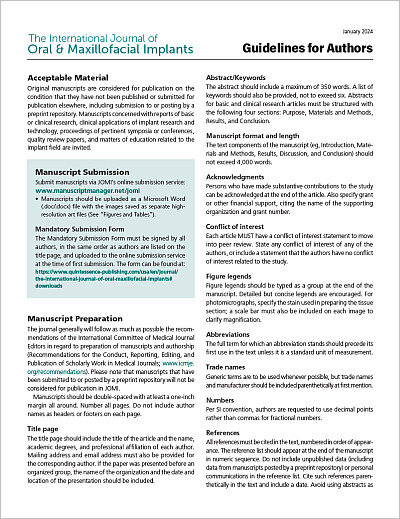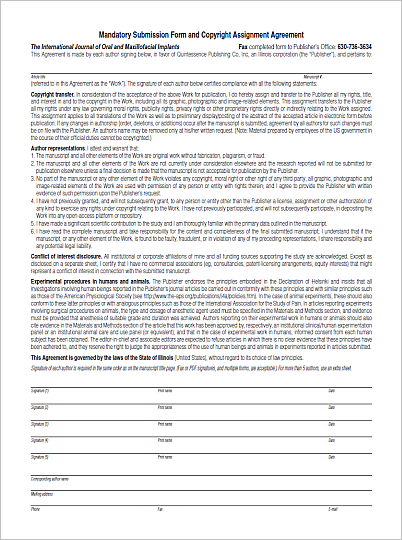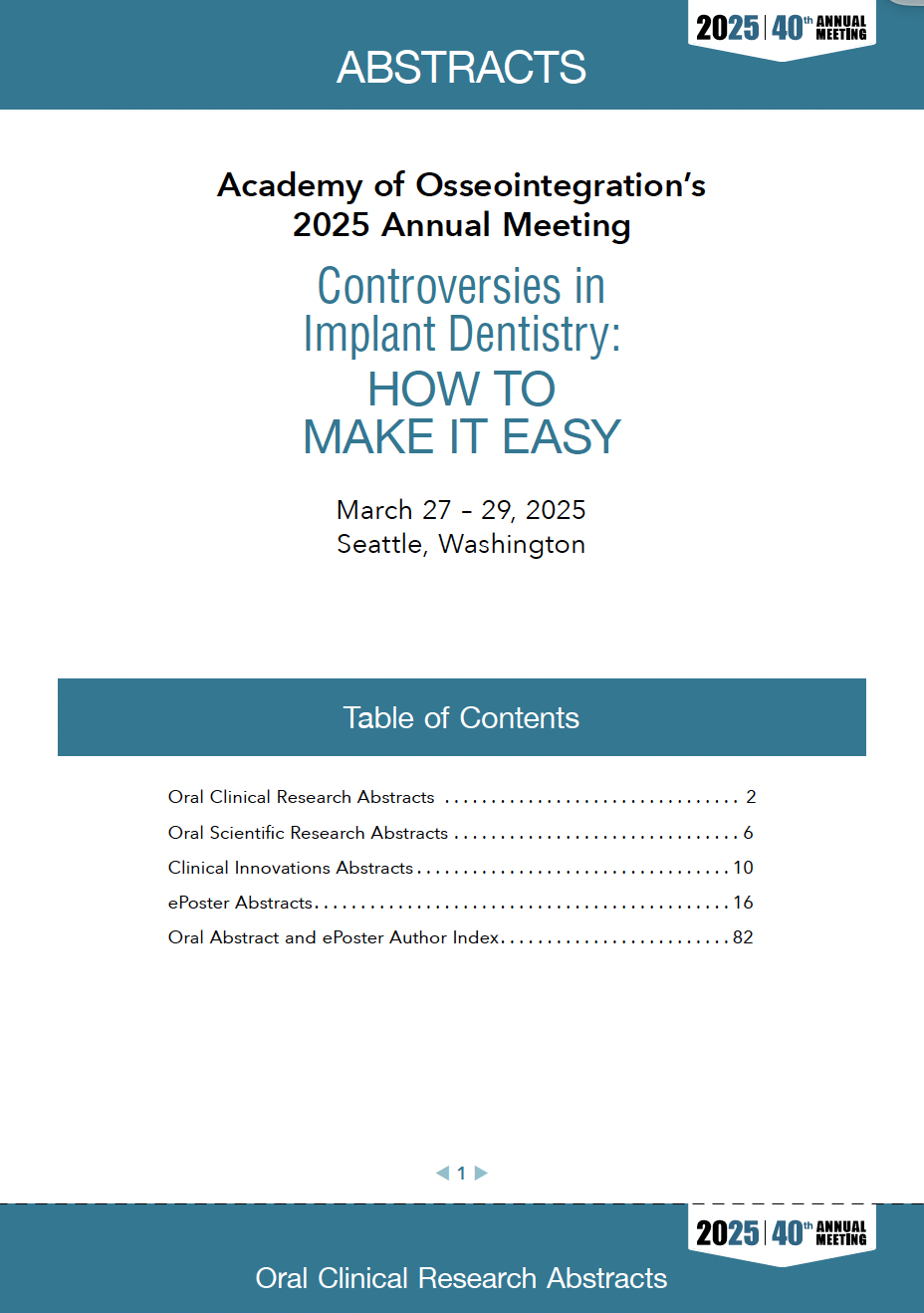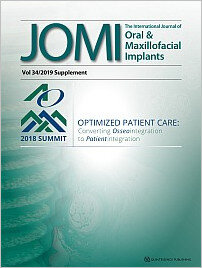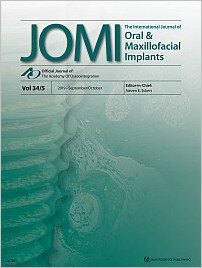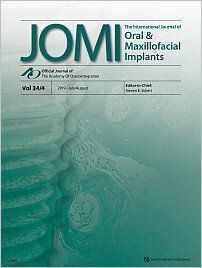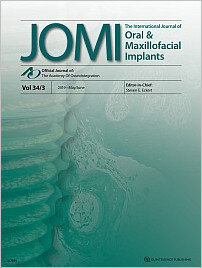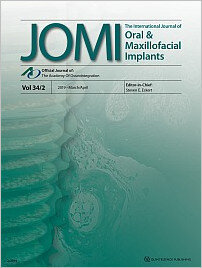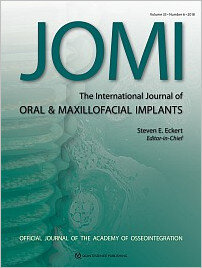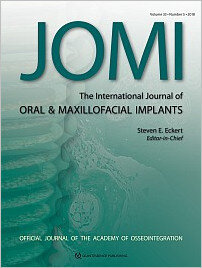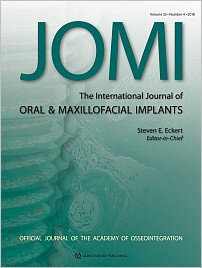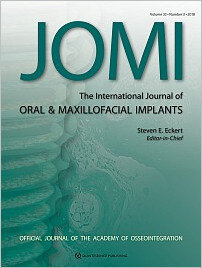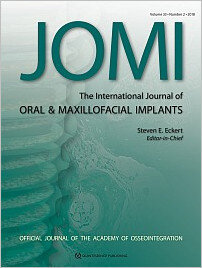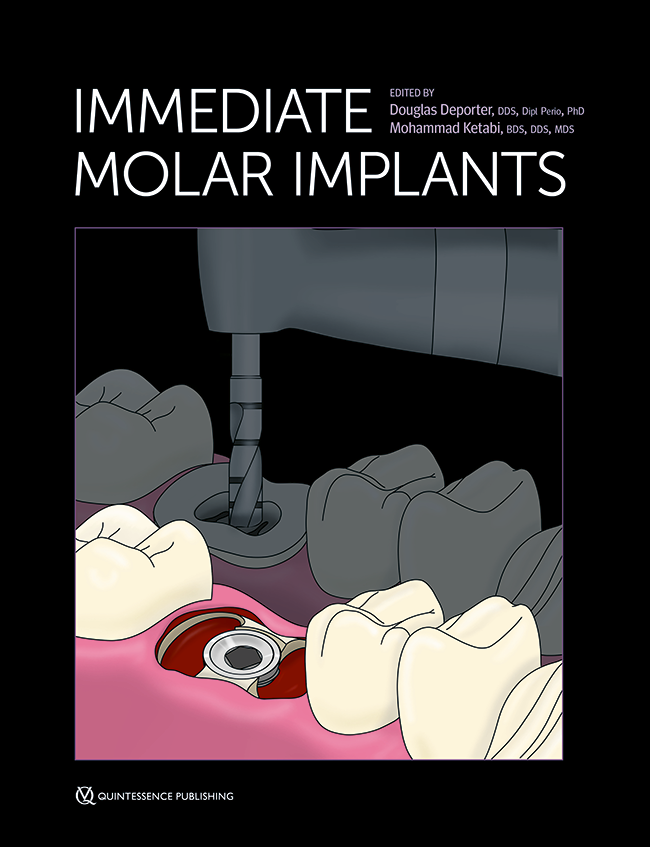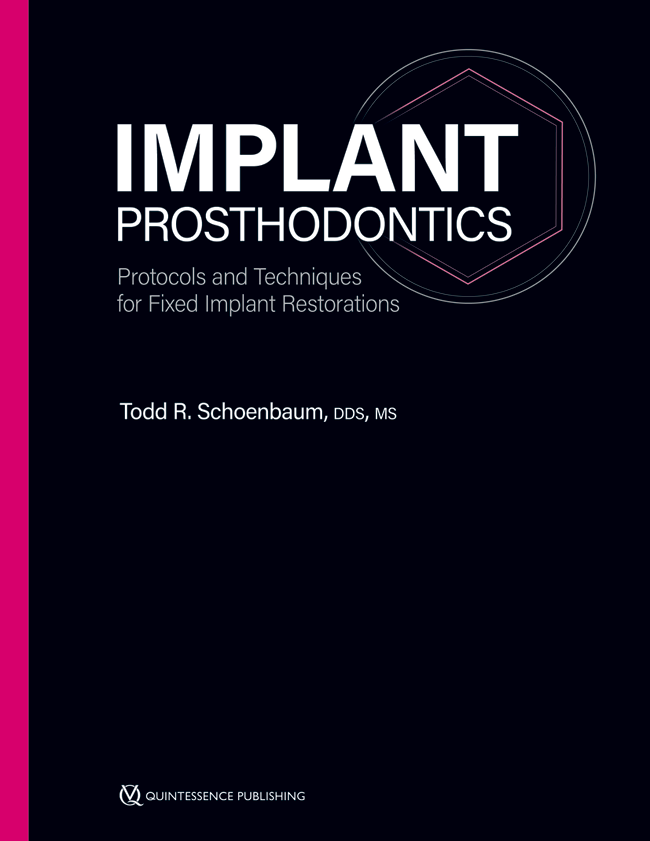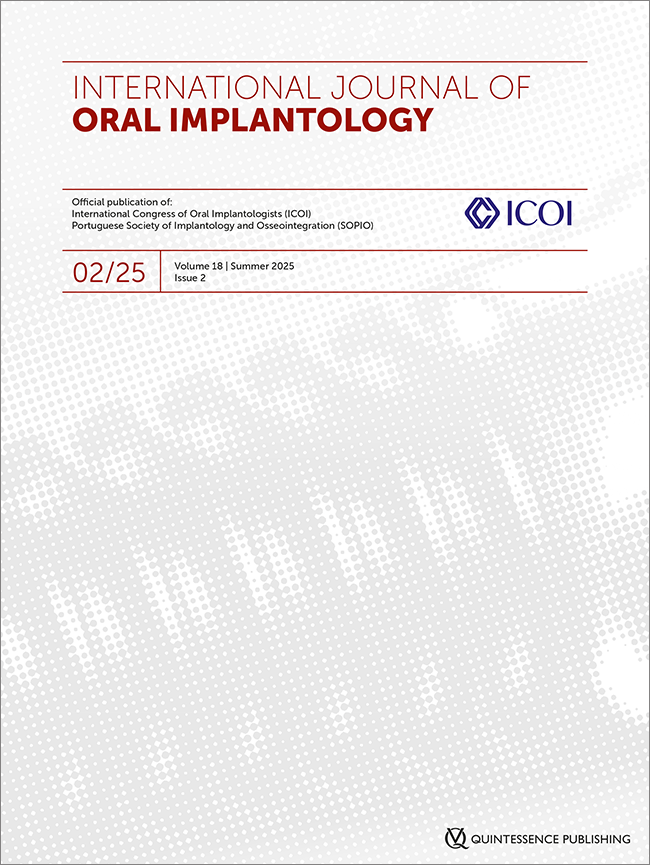SupplementPages s7-s23b, Language: EnglishMonje, Alberto / Ravidà, Andrea / Wang, Hom-Lay / Helms, Jill A. / Brunski, John B.Purpose: This systematic review was prepared as part of the Academy of Osseointegration (AO) 2018 Summit, held August 8-10 in Oak Brook Hills, Illinois, to assess the relationship between the primary (mechanical) and secondary (biological) implant stability.
Materials and Methods: Electronic and manual searches were conducted by two independent examiners in order to address the following issues. Meta-regression analyses explored the relationship between primary stability, as measured by insertion torque (IT) and implant stability quotient (ISQ), and secondary stability, by means of survival and peri-implant marginal bone loss (MBL).
Results: Overall, 37 articles were included for quantitative assessment. Of these, 17 reported on implant stability using only resonance frequncy analysis (RFA), 11 used only IT data, 7 used a combination of RFA and IT, and 2 used only the Periotest. The following findings were reached:
• Relationship between primary and secondary implant stability: Strong positive statistically significant relationship (P .001).
• Relationship between primary stability by means of ISQ and implant survival: No statistically significant relationship (P = .4).
• Relationship between IT and implant survival: No statistically significant relationship (P = .2).
• Relationship between primary stability by means of ISQ unit and MBL: No statistically significant relationship (P = .9).
• Relationship between IT and MBL: Positive statistically significant relationship (P = .02).
• Accuracy of methods and devices to assess implant stability: Insufficient data to address this issue.
Conclusion: Data suggest that primary/mechanical stability leads to more efficient achievement of secondary/biological stability, but the achievement of high primary stability might be detrimental for bone level stability. While current methods/devices for tracking implant stability over time can be clinically useful, a robust connection between existing stability metrics with implant survival remains inconclusive.
Keywords: alveolar bone, bone homeostasis, dental implants, diagnostic, implant stability, mechanical, resonance frequency analysis
SupplementPages s25-s33, Language: EnglishFiorellini, Joseph P. / Luan, Kevin WanXin / Chang, Yu-Cheng / Kim, David Minjoon / Sarmiento, Hector L.Purpose: The purpose of this review was to explore the available literature and compile studies that discuss the relevance of the biofilm, onset and progression of disease, critical peri-implant pocket depth, frequency of supportive implant therapy, excess cement, and keratinized peri-implant tissues as related to peri-implant disease.
Materials and Methods: PubMed, Cochrane Oral Health Group Specialized Trial Register, and hand searches of related journals were performed in relationship to the focused question. Reports describing techniques, preclinical studies, and case reports were excluded.
Results: Due to the absence of controlled studies, a meta-analysis could not be performed. Summaries of relevant publications were completed for each topic area. Clinical recommendations were developed to provide guidance to the practitioner.
Conclusion: The importance of proper diagnosis, planning, and clinical treatment cannot be overstated. Patient factors including systemic disease, periodontal status, and oral hygiene significantly impact peri-implant health. Clinician factors such as implant position, excess cement, and restorative design can contribute to development of peri-implant disease. Surveillance of implant status is essential and can be assisted by the assessment of risk factors, establishment of a proper recall program, and monitoring changes in bone and peri-implant pocket depths.
Keywords: biofilm, cement, dental implants, inflammation, peri-implant disease, pocket depth, supportive implant therapy
SupplementPages s35-s49, Language: EnglishAghaloo, Tara / Pi-Anfruns, Joan / Moshaverinia, Alireza / Sim, Danielle / Grogan, Tristan / Hadaya, DannySince their development, dental implants have become one of the most common procedures to rehabilitate patients with single missing teeth or fully edentulous jaws. As implants become more mainstream, determining the factors that affect osseointegration is extremely important. Medical risk factors identified to negatively affect osseointegration include diabetes and osteoporosis. However, other systemic conditions and medications that interfere with wound healing have not been as widely investigated. The aim of this systematic review was to evaluate the effect of systemic disorders including diabetes and osteoporosis on implant osseointegration. The aim was also to evaluate the effect of other diseases, such as neurocognitive diseases, cardiovascular disease, human immunodeficiency virus (HIV), hypothyroidism, rheumatoid arthritis, and medications, such as selective serotonin reuptake inhibitors (SSRIs), proton pump inhibitors (PPIs), and antihypertensives. Although the literature does not demonstrate that diabetes negatively affects implant osseointegration, most studies focus on well-controlled diabetics and the use of prophylactic antibiotics. In addition, studies have shown increased long-term bone and soft tissue complications. For osteoporosis, recent studies and reviews also fail to demonstrate a lower osseointegration rate. However, caution must be exercised in these patients due to the risk for osteonecrosis of the jaws (ONJ), especially in patients with bone malignancies. There is also no direct evidence that patients with HIV, cardiovascular disease, neurologic disorders, hypothyroidism, or rheumatoid arthritis have a decreased rate of implant osseointegration. However, some preliminary evidence suggests that medications such as SSRIs or PPIs may have a negative effect on implant osseointegration. These studies are fairly recent and must be validated with continuous research. Moreover, disease control, concomitant medications, and other comorbidities complicate implant osseointegration and must guide our treatment approaches and clinical guidelines.
Keywords: diabetes, medical risk factors, osseointegration, osteoporosis





